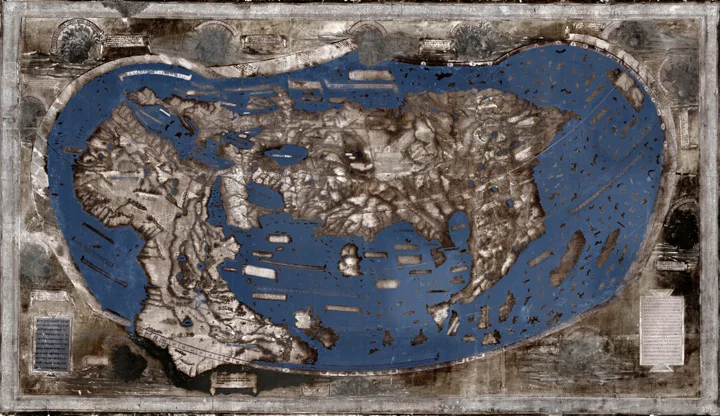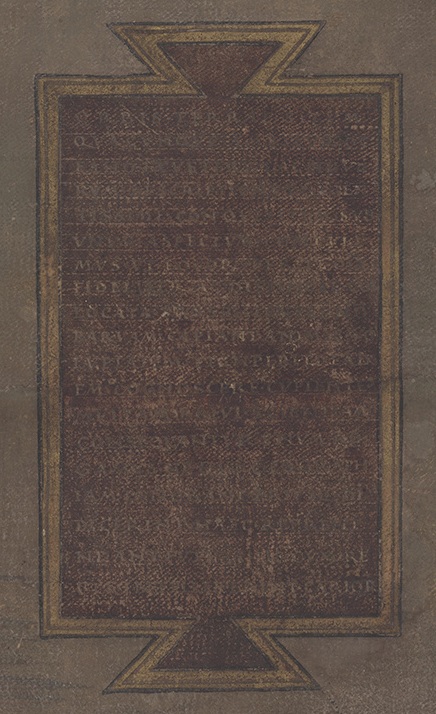Why MegaVision?
MegaVision excels in
Technology and Innovation
Accurate color reproduction
The MegaVision EV Multispectral system produces highly color-accurate images which are independent of illumination. The spectral data produced by the EV system can be used to make prints which better match the original when viewed under various illuminations and conditions.
For image analysis and restoration
Many colorants or pigments used in artworks have unique spectral properties. Spectral data of images captured with the MegaVision EV Multispectral system can be used to analyze these colorants and can help conservators choose the color accurate colorants for retouching the artworks. This way it is assured the restored artwork has color consistency in any light source.
Overcome limitations of RGB cameras and eliminate post-processing needs
Normal digital camera systems uses RGB filters (Bayer Matrix) on the CCD to separate colors. Although this works well for most photographic applications, it is impossible to accurately capture colors of a broad range of dyes, pigments, paints, fabrics, materials, papers, and other reflective surfaces. No matter how well the digital camera is profiled and color managed, localized color correction is necessary to achieve the level of color matching required for critical reproduction work.
The reason for this is simple and fundamental: There are no three color filters which can accurately model the tristimulus color response of the human visual .
The MegaVision EV Multispectral system, which captures 6 visible color spectra, is the solution to the time-consuming and tedious task of post-processing image correction.
Distinguish image signals and light signal
A RGB-digital camera cannot distinguish a white object under red light from a red object under white light. Such situations are no problems for the MegaVision EV Multispectral system. The system captures, process, displays and interprets images with up to 12 spectral channels. With that much spectral data available, the system can easily distinguish image signals from the object itself due to illumination.
Color accuracy proved in test
We have tested the color accuracy of the MegaVision EV Multispectral system by shooting a ColorChecker SG target and comparing the captured data with the measurements of the target on a SpectroScan Spectrophotometer. The result of the test shows that average ΔE is 1.6. A dramatic improvement compared to what any RGB sensor system can achieve.
Discover the invisible in high resolution
The MegaVision EV system not only captures the most accurate colors and visible details but it also captures high resolution ultraviolet images and high resolution near Infrared images over 5 different NIR bands. With 150 MP or 50 MP images in each of the bands the EV system creates the highest resolution UV and NIR images available in any system.
All layers in perfect register
Checking for important elements in the UV and NIR images are easy and convenient, because all captured images from the visible and invisible can be stacked in perfectly registered layers. No more trouble of matching size, resolution and position of images taken with different systems.
Multispectral as the ultimate
Conventional multispectral shooting technique produces images with all the benefits of multishot cameras — no interpolation as there are no RGB bayer pattern filters on the CCDs. Each pixel on the CCD receives full information in all color channels.
The MegaVision EV Multispectral system has the added benefit of not having registration issues because there is no moving parts in the system – only the light changes between each shot. The result is images with unparalleled details which cannot be matched by RGB based systems.
RGB Multishot as high quality additional option
When the quality of multispectral shooting is not needed, the MegaVision EV Multispectral system offers the flexibility to shoot RGB multishot. By using the integrated Color Filter Wheel, images with good RGB colors and super details can be captured using any photographic lighting system. The three-pass capture allows filtering of every pixel on red, green, and blue layers for superb rendering for all images. With correct filtering for every pixel on every layer, it is not necessary to diffuse the image, resulting in better sharpness and more detailed transitions to highlight. Unlike piezo stepped arrays, there is no Bayer pattern induced artifact.
Direct Monochrome Image Capture – highest quality and very efficient
The MegaVision EV Multispectral system offers an efficient and high quality mode of direct monochrome capturing. The digital back in the EV Multispectral system is equipped with a monochrome sensor which can be used with any light source continuous or flash.
Capturing monochrome images using a monochrome camera back is superior in many ways to converting images from a RGB camera back to monochrome:-
There are no residual artifacts created by the color sensor’s Bayer (or other) pattern filtration. Image parts with thin parallel lines are perfectly reproduced, making moiré effects much less of a problem
Without the Bayer filtration’s ISO robbing filter, the monochrome camera back receives two times more light from the scene compared to a RGB camera back, resulting in reduced need for lighting and over twice the Signal-to-Noise ratio for a given illumination.
The need for interpolation (developing) and anti-aliasing filtration common to RGB camera back is eliminated. Image resolution is increased, image purity is unrivaled, and the images has a much higher amount of detail in the low key parts of the image together with a much higher overall spectrum of tones from very bright to darkest areas of the image.
Fewer optical elements lie between the scene and the CCD
Spectral confusion due to Bayer filter transmission overlap is eliminated, reducing potential metameric failure and allowing improved display/printing flexibility.
When used with the visible bands of the MegaVision EV Multispectral Light system, no IR light is emitted and hence no IR filter is needed in front of the CCD or lens. Eliminating the IR filter substantially increases camera sensitivity and S/N for a given illumination.
Registration Accuracy when shooting multispectral
The MegaVision EV Multispectral system typically shoots 12 images to capture spectral information from UV to visible to IR, and all images will be in perfect registration, because there is no movements of the sensor, the object or filter. Only the light changes between each shot.
As the absolute minimum of light energy is used to illuminate an object, and heat, a fragile object will not expand due to heat thus minimizing mis-registration between exposures.
Having perfect registration is a great advantage for high quality reproduction and documentation work. It is also much easier to discover hidden elements when comparing the invisible layers with the visible part of the object. The UV and IR spectral bands can be freely mixed with individual visible bands and with the derived CIE color images, providing a unified data set of considerably increased value and offering unprecedented opportunity for scholarly research.
Registration Accuracy when shooting RGB color
For ordinary color reproduction when it is preferred to use strobe light, the EV system can be used in RGB mode by using the color filter wheel. A new technology developed by MegaVision eliminates any potential mis-registration between the three color channels caused by the filters.
Images captured using the EV systems 12 different light band, immediately result is 12 monochrome images in DNG format. With all images in perfect register it is easy to place them as layers and compare and analyze.
The Multispectral images are saved directly in CIElab
The new MegaVision system offers the combined advantages of capturing with multispectral colors and storing the data in the CIELab color space.
The unique multispectral camera system captures more colors than can be recorded by a normal camera system using RGB color filters, and by using the CIELab color space, the Tech Vision system can store all of the recorded colors. Offering a unique possibility to record extremely precise color data for the present and the future.
Lab is an absolute color space
The CIELab color space is an absolute color space, so it defines colors exactly, and is not depended on input devices (camera) or output devices (monitors and printer).
Other color spaces RGB or CMYK, do not exactly define color, they are only mixing recipes for light (RGB) or ink (CMYK). There are many different RGB color spaces, and the color of particular RGB values is not known unless the color primaries that create the color space are known. There is only one CIELAB, and the exact color of any value is always known.
The CIELab color space is larger and includes more color (even more than the human eye can see) than other color spaces. In for example RGB or CMYK certain colors are not represented in the color spaces and these colors are impossible to reproduce in these limited color spaces.
The Lab color space is the common color space of ICC color management, the international standard of color management. Even for devices not based on the CIELab color space, the colors will still be converted to and from CIELab in a color managed workflow. CIELab is the basis on which all color management systems are built.
In work where color accuracy is critical the Lab color space is by far the best
Color not represented in the RGB or CMYK color space, can still be recorded and stored in the much larger CIELab color space.
The colors recorded will be stored in color values independent of specific devices and will have greater value in the future where such devices and their color space have changed.
When presenting color artwork on a monitor or print, the color space must be converted to a color space specific to the monitor or printing method. When the starting color space is CIELab, the conversion will be more accurate because the starting values come from a larger device independent color space. And the conversion will also be independent of time.
Less Light reduces heat and stress on the objects
With no Bayer pattern filtration, no optical low pass filter and no IR cutting filter on the CCD of MegaVision EV Multispectral system, the amount of light needed to illuminate an object is reduced by about 3 f-stop.
The narrow-band LED of the EV Light does not emit IR or UV with every exposure (unlike strobes and most other light sources) . This greatly reduces heat and stress on the object and with less heat, there is no risk of registration error due to the object expanding.
Efficient use of light
Ordinary photography, which employs broad-band white light, exposes the object to a great deal of unnecessary light energy. The majority of this light is then discarded by the filtration system in a RGB digital camera.
With narrow band LED illumination of the MegaVision EV Multispectral system, no filtration is required. The light energy is used much more efficiently, and only sufficient light to properly expose the objects in the spectral band of interest is generated. There is no unnecessary light energy being created. This means that the object is subject to less light stress, and the lighting system requires dramatically less power.
Typically, an area CFA (color filter array) image capture requires about 10 times more light energy directed onto the document surface for an equivalent exposure by the MegaVision EV Multispectral system.
A linear (line-scan) CFA with constant uniform illuminant requires several thousand time more light energy compared to the MegaVision EV Multispectral system.
Less noise
Color images derived from the MegaVision EV multispectral system are less noisy, since the light intensity of each color band capture is adjusted to maximize signal to noise ratio.
Because the amount of light can be adjusted and set for each different exposure, the signal to noise ratio of all exposures are optimized. “Blue channel noise” due to low blue filter efficiency and low detector sensitivity is non-existent.



